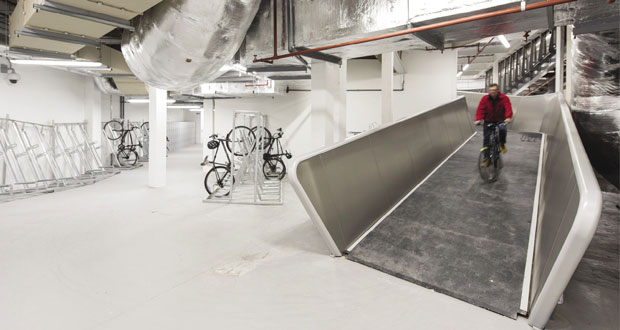The pandemic has brought a range of challenges, one of this is just getting to work. How do you help workers stay safe, healthy and comply with social distancing measures while still meeting ambitious environmental targets? Andy Brown looks at alternative routes to work
Pressure on organisations of all kinds to become more sustainable, cut their carbon emissions and basically do the right thing is commonplace and rightly so. The UK’s leading commercial property owners and FMs have signed up to the delivery of net zero carbon real estate portfolios by 2050 including ENGIE, Mitie, Sodexo, ISS and JLL. But when times are tough it’s not easy to keep faith with green pledges, especially when research suggested people preferred to avoid public transport, and many employers agreed.
Jean-Patrick Judson, Anabas Account Manager, explained: “Reacting in a safe manner had to be priority. To protect the health of our workforce, Anabas, and some of our clients, advised staff not to use public transport. Colleagues that needed help travelling to work to avoid using public transport were supported by the company. This was the right thing to do to safeguard the wellbeing of our employees.”
Everyone we spoke to made safeguarding staff the top priority. Jasmine Hudson, HR Director, Mitie explained: “We’ve put a number of initiatives in place to support our people when travelling to work. This includes simple solutions, such as being flexible with start and finish times wherever possible and giving all Mitie employees two reusable face coverings to use on their commutes, all the way through to providing buses for colleagues who normally car share, ensuring there’s enough space on board to socially distance.”
Again, like other service providers, Anabas adjusted shifts and some people were furloughed so there was less of a demand for transport. But how did they get to work?
James Mabbett, Head of Client Solutions and CSR, Atalian Servest said: “From January to August, we saw around a 50 per cent reduction in fuel use across the business. This can largely be attributed to people working from home, where possible, but our cycle to work scheme, which has been in place since March, has seen a positive uptake, providing a cost-effective and sustainable method of transport to get to and from work.”
ACTIVE ROUTES TO WORK
Taking an active route to work is a major environmental plus. That should make it something central to FM thinking as it helps with placemaking and improving how we view work. It’s positive for the environment: easing congestion, improving air quality (mitigating COVID-19) and good for physical and mental wellbeing. But it is not for everyone.
“Our main concern remains the congestion charges in the heart of London. Our security officers, along with other key workers, are having to travel to work in the city centre via the Tube and other means of public transport,” said Theo Nicolaou, Managing Director, SmartSec Solutions. “At the height of lockdown things were a bit different and more manageable when traveling to work because our security officers were able to park at their convenience. Now they fall into the costly congestion charges which are now active from 7am to 10pm Monday to Sunday.”
No one we spoke to confirmed rumours that individual operatives are being offered vans or cars to reach clients due to concerns about using public transport. But if that’s been happening it is understandable – albeit not in keeping with environmental goals.
“It might sound harsh given the circumstances, but there are other options. But it comes down to analysing the distance, costs and efficiency. This is a business argument. Time costs, health costs, parking costs, purchase costs. Does the investment add up? It almost certainly doesn’t especially if the distance is an inner urban area and less than five miles,” said Megan Sharkey, urban studies research scholar at Westminster University.
Steve Brewer, Workplace Designer and Director of Burtt-Jones and Brewer agrees and points to different options.
“There are many options for an eco-friendly mode of transport to work. Electric scooters are being trialled in the UK right now and could radically change how we move around. They fold up easily, so why not ride one to the bus stop or station then put it under your desk? Or, if you only have one or two miles to go, why not scoot all the way?”
Thinking differently is the way to beat many problems, from COVID-19 to improving congestion, reducing carbon emissions, and creating healthy lifestyles. But it requires a change in mindset. It is so easy to revert to the motor car to feel safe, despite the arguments against using it.
“People go to where the work is, so why not put the opportunities to work closer to where people are to cut out the need to move around,” argued Commentator and Facilitator, Simon Heath. We need more strategic thinking around FM and the workplace. Why not use the vacant spaces appearing on our high streets; continue to make it easier to work from home. FMs can help their own people to stay safe, but should they be advising their clients about a total rethink of how they use the workplace to mitigate risks. It’s too easy for owners of business and buildings to call for a return to work and business as usual. There’s a chance here for FMs apply their skills, knowledge and influence to change the landscape of the very nature of work itself.”





